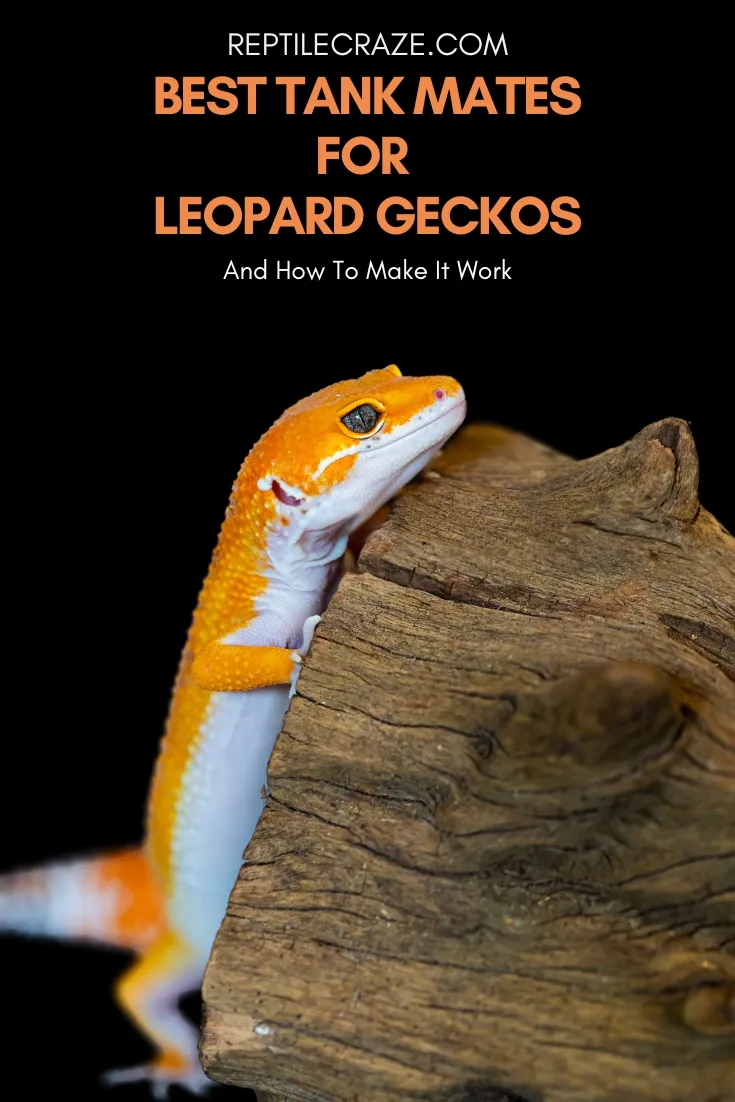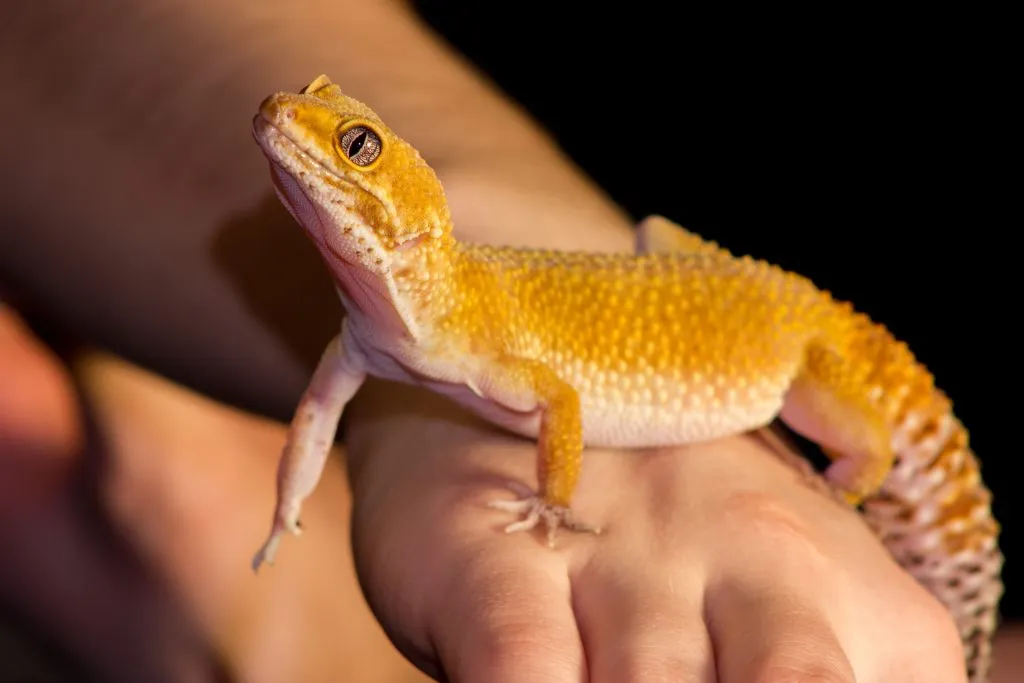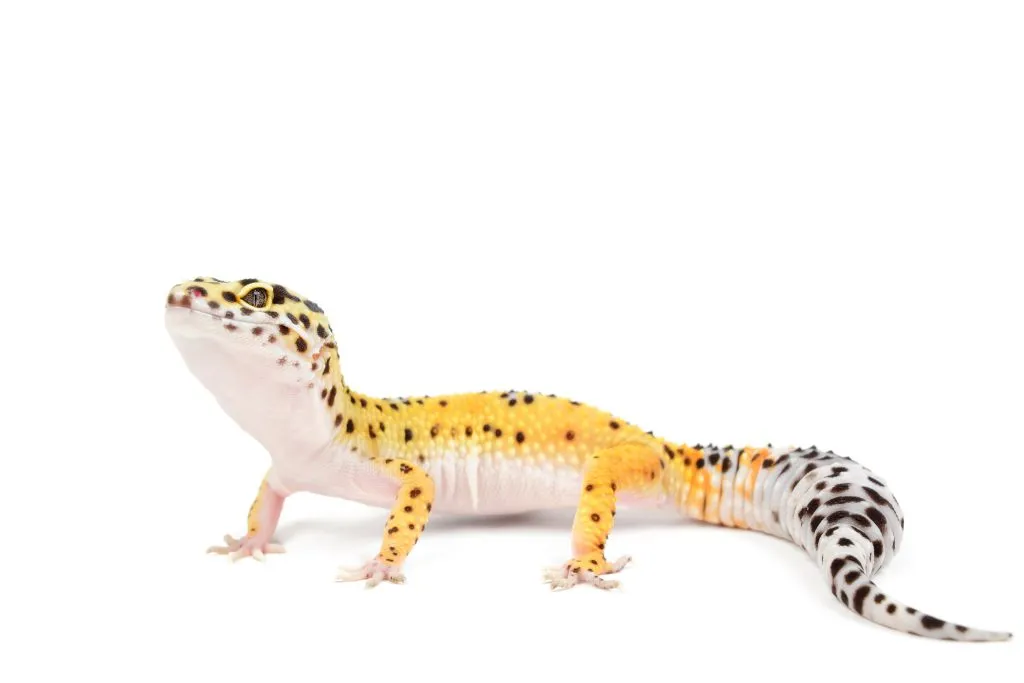
What animals make the best
In most cases, female leopard geckos take to being housed together better than males, which should never be kept together. Certain herbivorous tortoises may make compatible companions if the enclosures are large. But the majority of reptiles and amphibians are not suitable
The question of cohabitation regarding leopard geckos, even with its own kind, has always been controversial. This article discusses whether or not leopard geckos should live with certain animals in one enclosure and how this arrangement can work.
Table of Contents
The Best Tank Mates For Leopard Geckos
A leopard gecko could live in relative harmony with certain reptiles under the right conditions.
The candidates for best
- Female leopard geckos
- Tortoises
Many online articles advocate the compatibility of leopard geckos and frogs, such as:
- Poison dart frogs
- Tree frogs
- Mantella frogs
But looking at their humidity requirements, leopard geckos and frogs should live in separate enclosures.
Remember: One adult leopard gecko needs a 20-gallon
tank to live healthily.Adding a
tank mate to the mix would require additional enclosure space to meet the needs of the second animal.
Leopard Geckos With Leopard Geckos: Gender Matters
Leopard geckos can live with another of their kind as long as their genders are compatible. Still, “cohabbing” should be done with caution.
Note: If you’re looking to keep a second leo, the rule of thumb is to add another 10 gallons per gecko. But we encourage homing them in bigger tanks.
A
tank between 40 and 50 gallons would be just about right for two leos.
Male with Male
Male leopard geckos are inherently more territorial and dominant than females.
Males will fight to the death over space,
Male leopard geckos continuously battle each other when trapped in the same enclosure. One of them will most likely die. But there could be a lot of stress and injuries for both lizards before that happens.
So, never allow two males to live together, even if they are clutch mates, young, or seemingly peaceful for a while. Violence is inevitable in this disastrous mix.
Male and Female
You can keep male and female leopard geckos together if you intend to breed them. But breeding can be stressful for females, so leaving that to very experienced owners is best.
This arrangement, though, will work only for a short period.
Males will constantly want to mate, so the females can get excessively stressed from continual harassment from a male’s effort to breed.
A male can start acting aggressively toward the female when it’s in the mood and ready to mate. It will start biting the tail and progress to biting the neck, where it will begin the mating process.
No wonder mating can stress a female out when done repeatedly.
It is best to separate them when breeding time is over.
Moreover, males may still compete with females over
You will know an overly stressed female when you find her:
- Lethargic
- Has low appetite
- Irritable
- Tail dropped
A stressed-out female who’s had enough of mating can also turn aggressive toward her mate.
Female and Female
The female and female leopard gecko combo is the most likely to succeed, though there are no guarantees.
Females are significantly less inclined to fight but occasionally clash over resources.
The typically larger female leopard gecko may bully the smaller one by obstructing the other’s access to
However, individual personalities can differ within species. Just because two leopard geckos are female doesn’t mean they will always get along.
Note: Things can get sour at any moment, even when leos have been cohabiting without issues for years. It is best to have a 20-gallon
tank stored at the ready in case you need to separatetank mates. More on keeping leos with other leos here!
Leopard Geckos With Other Geckos And Lizards: Maybe Not
Leopard geckos won’t make good
Crested and day geckos, for instance, can make the list of worst
Both species have requirements that are totally at odds with those of a leopard gecko.
These lizards come from a semi-tropical environment, while a leopard gecko comes from a drier one. Both gecko species are also arboreal and would thrive in a vertical enclosure. Leos are terrestrial and would need wide ground space to suit their activities.
It will be impossible to balance humidity, temperature, and other environmental requirements in one

This scenario will result in compromising the health and very lives of all inhabitants in the
Contrary to many articles online, forcing a leo to room with a bearded dragon is a bad idea.
Even though people assert that beardies are docile and have comparable habitat needs, these lizards will make a quick meal out of leos.
Moreover, bearded dragons carry parasites that can cause stick tail infection in leos.
A leopard gecko is better off paired with another female leo than any other lizard or gecko species. Learn more: Why Bearded Dragons Can’t Live With Leopard Geckos
Leopard Geckos And Tortoises: Is It Worth It?
Frequently, leopard geckos and many other reptiles get along with tortoises.
A leopard gecko can live with a tortoise as long as it is a true herbivore. A tortoise’s all-plant diet won’t compete with a leopard gecko’s insect diet.
But here’s the thing. Not all tortoises are vegetarian. Many are omnivores and even carnivorous.
There is a very real chance that a sizeable omnivorous tortoise can eat or harm a leopard gecko!
Even if a tortoise is active during the day and a leo is awake during twilight and evening hours, there is still a possibility for both to encounter each other.
Watch how a red-footed tortoise enjoys a lizard for lunch.
Another big problem is that many tortoises can grow very big, which means they need a much bigger home than a leopard gecko would need.
For a leopard gecko, an overly huge
As we’ve also mentioned, you’ll need to care for your tortoise’s husbandry needs, which may be typically different from those of a leopard gecko.
So, if you insist on pairing a leopard gecko and a tortoise, do so with caution and lots of research. You may find it not worth the cost, effort, or even the risk (no matter how remote as others believe) of an injured or dead leo.
Leopard Geckos And Frogs: Really?
Many articles on the net point out that certain small frogs can coexist peacefully with a leopard gecko.
Mantella frogs, poison dart frogs, and tree frogs are active during the day when the leopard gecko is sleeping or resting. So there are fewer chances of them encountering each other.
Unlike horned frogs, bullfrogs, and giant toads, these frogs don’t see leopard geckos as prey.
At first glance, these frogs seem to be better
But the massive problem with the frog-leo pairing is environmental incompatibility.
Leopard geckos are natives of dry environments and need their humidity levels kept quite low, between 30% and 40%.
The frogs touted as compatible
Finding a middle ground for the humidity in a vivarium could hurt both animals in a big way.
After this discussion on possible
Here are more reasons that drive home the point.
5 Reasons Why Leopard Geckos Should Live Solo

When you enjoy keeping a lizard, like a leopard gecko, you tend to want to add a companion to double the pleasure.
We get it because we’ve done it too.
But there are strong reasons why leopard geckos and other reptiles don’t do well in mixed enclosures.
However, housing them with others is not an absolute “no.” On the other hand, finding
Let’s dive into five good reasons why leopard geckos should live alone.
1. Leopard Geckos Are Naturally Antisocial
The leopard gecko’s reclusive nature makes it need its own space.
They are endemic to desert habitats in some parts of Asia and the Middle East, namely Nepal, India, Iraq, Iran, Pakistan, and Afghanistan.
The desert can sometimes be unforgiving, so competition for
With such a “world view,” it’s no wonder that having company just equates to stress for a leopard gecko.
Sharing a
2. Leopard Geckos Have Different Needs
Finding
For example, leopard geckos have minimal humidity requirements, ranging between 30% and 40%. But other geckos coming from tropical places need a humid
3. Leopard Geckos Can Eat or Be Eaten
Leopard geckos are smaller than most other reptiles, so larger animals like toads and bearded dragons often regard them as prey.
Conversely, a leo can become a predator if its
Leopard geckos can even turn cannibalistic and eat smaller leos or even their own hatchlings!
So, be careful what you co-hab your leo with!
4. Leopard Geckos Can Turn Temperamental Suddenly
Even if your leopard gecko and its
Sometimes, it takes a split second for the situation to become fatal, depending on the species involved.
Fighting may not always end in death, but it frequently results in lost toes, damaged tails, and expensive vet bills—another great reason why leopard geckos should not be housed with other animals.
5. Leopard Geckos Are Less Aggressive Predators

As more opportunistic than aggressive predators, leos sometimes opt to wait for their
A more aggressive
Unless you monitor feedings, you may not know your leopard gecko isn’t getting enough nutrition to maintain its health.
Food For Thought
As we keep learning about reptiles, we find new information that may shift our paradigms.
Consider this. A few leopard gecko keepers believe that keeping a leo alone may not be as beneficial as popularly known. They argue that it may be suitable to home a male gecko with a colony of females under the right conditions!
According to a study, solitary confinement could negatively affect a leopard gecko’s physiology. It may be inferred that it could jeopardize the lizard mentally as well.
Leopard geckos may be more social than we thought.
The study found that the social experiences of a leopard gecko have long-lasting effects on its behavior and body. Leopard geckos exposed to other leos have increased androgens, promoting bone muscle development and healthy metabolism in vertebrates.
Watch this thought-provoking video and tell us what you think.
Final Thoughts
The best
Herbivorous tortoises make an iffy second-best candidate because of the size of the enclosure requirements.
Other geckos, lizards, and frogs don’t make compatible
- Enchi Ball Python: A Unique and Stunning Morph of Python regius - March 27, 2025
- Emerald Tree Monitor: The Enigmatic Green Guardian of the Rainforest - March 26, 2025
- The Egyptian Cobra (Naja haje): A Fascinating Serpent - March 25, 2025
